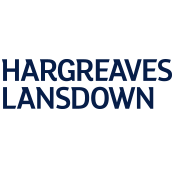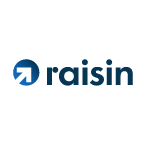It’s really important to teach children about money, and opening a savings account for them is a great way to do this and encourage a regular savings habit in the future. This short guide talks you through some of the options available. You may also find our guide on the best apps to teach children about money helpful.
Best Children’s Savings Account deals available at the moment:
We have ranked some of the highest interest paying children’s savings accounts based on AER:
- Kent Reliance 2 Year Fixed Rate Bond – Issue 123 AER 5.99%
- Coventry BS Fixed Rate Bond (314) 31.08.2025 AER 5.90%
- West Brom BS 2 Year Fixed Rate Bond AER 5.65%
- Saffron BS Two Year Fixed Rate Children’s Bond AER 5.60%
- Principality BS 2 Year Fixed Rate Bond (Issue 420) AER 5.45%
If you want to get a potentially better rate of return on your children’s savings it is also worth considering a Junior ISA. Junior stocks and shares ISAs are linked to the performance of the stock market and have traditionally always results in better savings rates. However, it is worth noting that past performance is no indication of how the stock market will perform in the future.
It is worth reading our interviews with Beanstalk founder Julian Robson about why investing for your children is so much more important than saving.
For more information on JISAs you can compare the best Junior stocks and shares ISAs here.
Alternative Savings Accounts
| Savings Platform | Highest Interest Rate | Savings Accounts | Minimum Deposit | FSCS Protected | GMG Rating | More Info |
|---|---|---|---|---|---|---|
 | 5.11% | 17 | £1,000 | ✔️ | See Rates | |
 | 5.4% | 64 | £1 | ✔️ | See Rates |
You may also be interested in these other types of savings accounts:
- Saving Accounts Offers
- Bank Account Offers
- Best Interest Rates
- Prize Saving Accounts
- Easy Access Accounts
- Fixed Rate Bonds
- Cash ISAs
- Notice Saving Accounts
- Monthly Income Accounts
- Lifetime ISA Accounts
- Children’s Saving Accounts
- Junior ISAs
How do Children’s Savings Accounts work?
Children’s savings accounts are simple cash accounts with a low minimum savings amount – typically £1. Some providers will allow children to operate their savings account themselves, with a parent or guardian as a signatory.
Just as with adult accounts, you can from choose easy or instant access, fixed-term bonds which lock money away for a few year, or regular savers where you must pay in each month for a year without making withdrawals.
The Junior ISA (JISA) is a savings account for children which sits within the ISA tax wrapper. Children have tax-free allowances just like adults and, as of the 2020/21 tax year, they don’t pay tax on the first £18,500 of income.
The JISA limit more than doubled this tax year, so you can now save up to £9,000 a year tax-free. You can choose a Cash or Stocks & Shares version of the JISA depending on whether you want to save or invest. Any adult can open and pay into one on behalf of a child, but the account will be in the child’s name, and they can make withdrawals once they turn 18.
The Junior ISA replaced the Child Trust Fund, another type of tax-free account which is no longer open to new savers, although you can keep paying into your account if you’ve already got one, or transfer it into a JISA.
Another savings option could be Premium Bonds, where you don’t earn interest but instead you get the chance to win prizes. You can even set up a pension for a child that they can only access at age 55, under current rules.
- Further reading: Which are thee best bank accounts for your children?
Pros and cons of children’s Savings Accounts?
Interest rates are usually pretty good on children’s accounts – you can find deals that beat the equivalent adult savings accounts. Rates will not automatically be higher in fixed-term accounts for children though, so compare products carefully.
Some accounts come with a debit card so you can help older children learn more about banking and how money works.
The main advantage of a Junior ISA is that it’s tax efficient, and – this could be a pro or a con depending on your perspective – the cash is locked away until the child turns 18.
Balances in children’s savings accounts of up to £85,000 are covered by the Financial Services Compensation Scheme in the event a regulated provider goes bust.
On the downside, as a parent or step-parent, you’ll pay tax at your top rate on interest earned above £100 (above your personal savings allowance) on savings in a child’s name unless you save into an ISA.
The regular savers paying the highest rates tend to limit what you can put in each month, so if you want to save significant sums, you may need to spread the money across several different accounts.
- Interested in switching your bank account for a reward? Compare the best bank account switching offers here.

